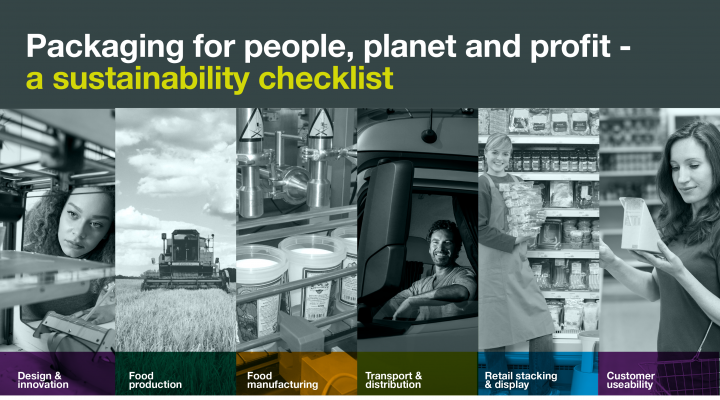With four key acquisitions in the flavours and ingredients sector completed already this year, Frutarom is making impressive strides towards its target of USD2Billion in sales by 2020. As a global supplier to the Fruit Juice, beverages and food industries, Frutarom is one of the fastest growing producers of flavours and fine ingredients and ranks as one of the top 10 companies in its field worldwide.
Maintaining production facilities in North and South America, Europe, Asia and Africa, the company provides more than 60,000 products to over 28,000 customers spanning the globe in more than 150 countries in the food and beverages, flavour and fragrance extracts, pharmaceutical, nutraceutical, health food, functional food, food additives and cosmetics industries.
The successful implementation of Frutarom’s strategy of augmenting profitable organic growth with accretive acquisitions has led to sales growing at an average annual rate of 18% since 2000.
When first established in 1933 Frutarom was one of the earliest industrial enterprises in Israel. Its origins lie in the desire to produce flavour and fragrance ingredients based on local agricultural produce, in particular citrus products.
Here Ori Yehudai, President and CEO of Frutarom, talks to Fruit Juice Focus on some of the background to this amazing growth and why he is proud that the company still adheres to its founding principles.
Fruit Juice Focus (FJF): Frutarom was established over 80 years ago, what were the ideals of the company upon inception and have those ideals and objectives changed since then?
Ori Yehudai, Frutarom (OY): That is a very interesting question. Frutarom was founded with the aim of combining the cultivation of aromatic plants and flowers with the extraction and distillation of flavours, fine ingredients and essential oils in order to extract natural raw materials primarily for taste but also for health applications.
The company’s foundation was promoted by Professor Haim Weizman, the first President of the State of Israel and a well-known chemist.
I love the idea that what we are doing today is very much what the company was doing back then in the early days. Mostly using mother-nature in order to produce and extract natural ingredients out of the earth. Nowadays we are not necessarily the growers but operate very much as a collective of growers all around the world whose aim is to get the right ingredients and natural raw materials which we need in order to produce the products for our customers. Today 75% of these products are natural, and the proportion of natural products has continued to grow very rapidly over the last few years. As part of our strategy we put a great deal of importance in maintaining a strong internal research and development department that collaborates with universities and start-ups and many of the acquisitions we have made are to strengthen our position as one of the leading players in the natural products, natural ingredients, natural extraction, natural essential oils marketplace. One of our central aims is always where possible to replace synthetic ingredients with natural ingredients (such as natural colours, natural anti-oxidants to replace artificial preservatives) that we have produced. So if you go back through our history there is a continuation that we are proud of.
FJF: Replacing the synthetics with the naturals – good for your green credentials and a great selling point?
OY: That’s very true and that’s part of the strategy. Around 10 years ago when we were looking at what is the differentiation between Frutarom and its competitors, one of the most important ideas was to focus on natural products and on solutions that will replace synthetic ingredients and will allow millions of consumers the options of selecting products with more natural ingredients and less synthetic ingredients. With the trends in juices to move towards healthier and sugar free products this has proved to be a sound strategy.
FJF: Frutarom has made over 20 acquisitions in the past two years in line with the company’s growth objectives for 2020. Operationally this must be a huge undertaking to manage. How has the company been structured to ensure the successful integration of all those companies involved?
OY: The second leg of our growth strategy has been to combine internal growth – which is double the rate of that in the food industry globally – and strategic acquisition. We have made 61 acquisitions in the last 20 years and indeed 23 of them in the last two years and 32 in the last five years. As you say this is a huge rate of expansion and acquisition by any company’s standards. Frutarom today as a global company has very strong management teams in all the relevant regions and managers that are very experienced at managing product lines. We don’t necessarily do many acquisitions in the same territory or the same product lines which means there are different managers that are managing the integration processes of the acquisitions that we are acquiring. They come from the region and from the business that they were involved with as far as each specific acquisition is concerned.
In today’s world we continue to see a consolidation process that has been going on globally for maybe 60 years. Consolidation between the big boys is already done but there are still about 800 small flavours companies in the world and around 400 in the area of natural ingredients so we have a very strong pipeline for additional acquisition. This will allow us to double in size every four years – which we have been able to do in the last 30 years that I have been in the business – and jumping to the target of USD2billion before the year 2020. This rate of growth calls for continuation of organic growth and acquisition of revenues of around USD150million a year. If you look at the last three years we have been growing internally above average market growth rate and there has been approx. USD220 million in revenue acquisitions per year so at the moment our 2020 target doesn’t look like such a challenging target as it did.
FJF: Apart from natural ingredients and small flavours are there any other markets you are looking to get into or are Frutarom sticking to their core markets?
OY: Frutarom is not a single solutions company like some of our large competitors. We are not looking to move away from our core markets. We see ourselves more as a provider of combinations of taste and health solutions for sectors we work with such as the fruit juice and food industry. For instance, we would develop savoury solutions for regular meals that includes not only the flavour but also the natural antioxidant, the natural colour and the functionality that the customer requires as an ingredient. Another example would be creating a solution relating to a beverage paste. Fine ingredients is around 20% of total sales of Frutarom, which relates to 700 different raw materials that we are producing, most of them are natural products that are based on flavours or health ingredients for natural colour or antioxidants.
We are structured in such a way that under one roof in any one territory we can make the right solutions that our customers need. You have to bear in mind that the majority of our business is with smaller and mid-size customers who in the last two years are growing faster than some of the bigger companies. These customers need the full solutions options much more than the big companies. They are typically niche and require solutions that Frutarom provides in the natural products sector that other larger competitors will not be able to produce because of the technology involved or because of their limited product portfolios.
FJF: Has the expansion of the Frutarom research and development capabilities seen a marked increase in innovative new products being developed for your customers in the fruit juice industry? And can you tell us more about these developments?
OY: It’s not so much new types of products – it’s more about new solutions that consumers want to see with less sugar, less calories, the natural solutions back in the fruit juice drinks, to ensure good taste and to improve on what we have got to make it more acceptable to consumers based on what they want.
For example, in the citrus industry natural sweeteners with zero calories and the excellent taste at affordable price are now becoming a very important part of today’s world. Consumers and the industry are very interested to move towards these natural solutions but the natural products are not always affordable because prices are much much higher than the synthetic ones. Part of Frutarom’s vision, more so in the last year, is to go back into collaboration with growers and farmers and to work to improve our yields and our cost structure to enable us to provide the solutions at a price that is acceptable to our customers.
Then we would be in the position with this type of natural sweet enhancer for example to be able to offer the product at an affordable price allowing both very large beverage companies and the smaller companies to be able to use these solutions.
FJF: What future trends do you predict for the fruit juice industry?
OY: We predict more and more consolidation between the juice manufacturers. For Frutarom part of the challenge is how to partner with the fruit juice processors to be able to continue to deliver more and more natural raw materials for taste and for health purposes.







